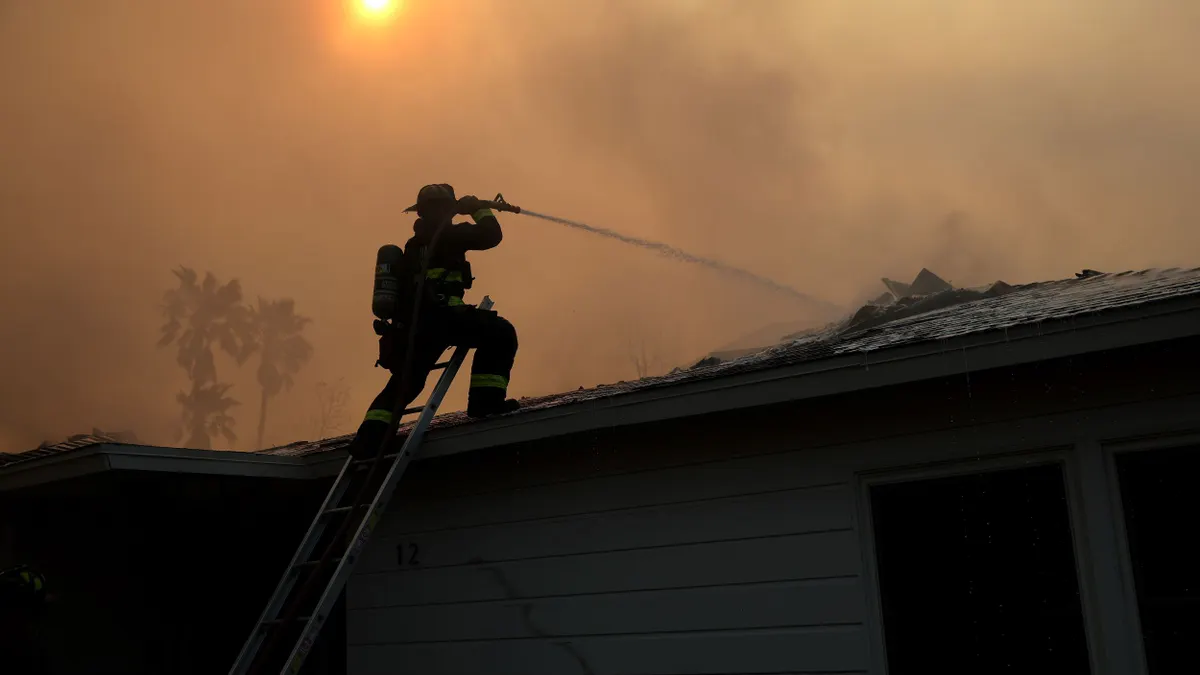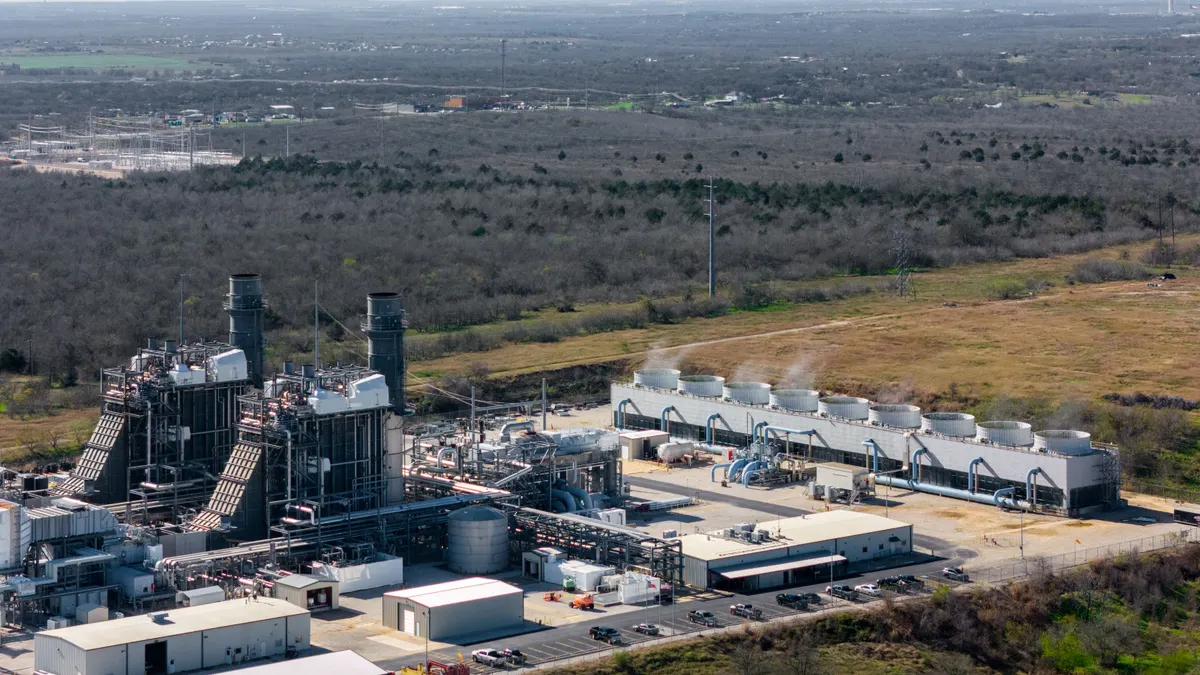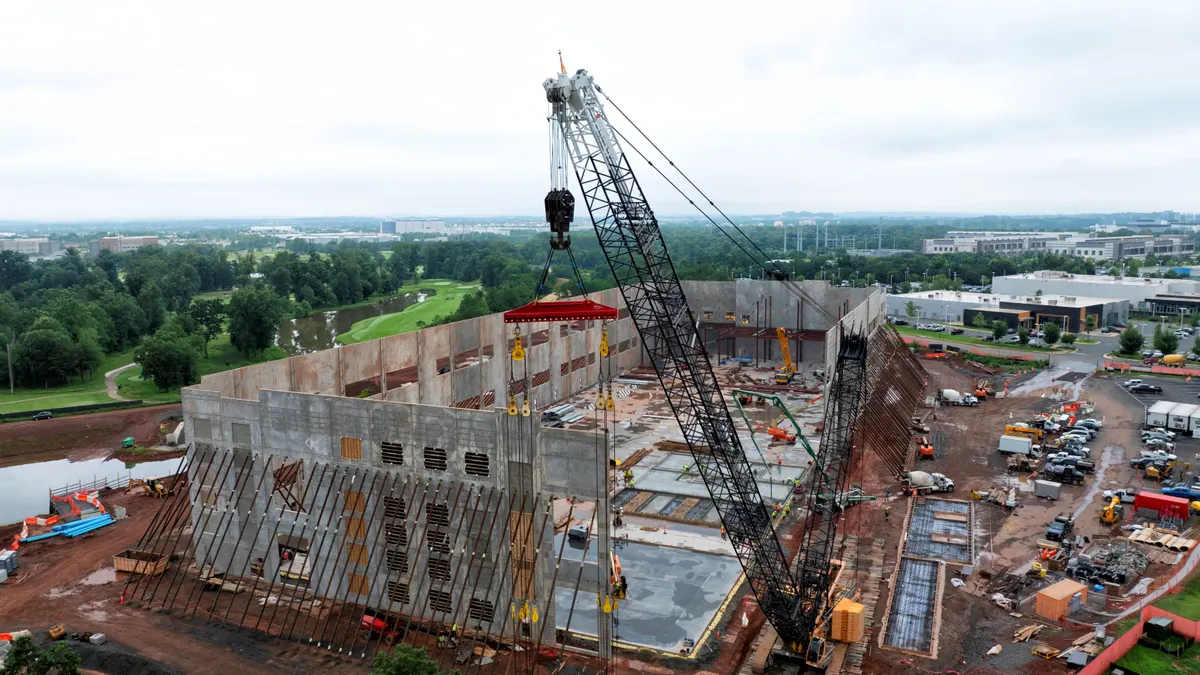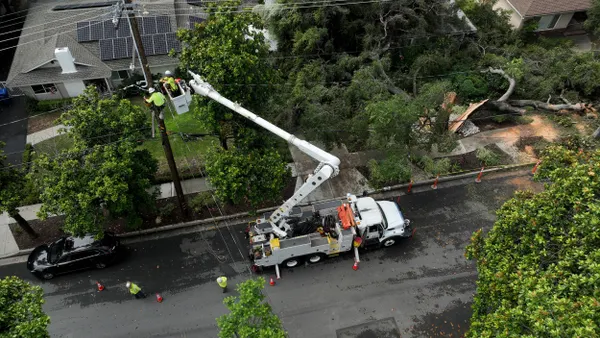Dive Brief:
-
The United States has accused Southern California Edison of negligently failing to maintain power infrastructure in a pair of lawsuits seeking approximately $77 million for damages stemming from two deadly fires in the Los Angeles area since 2022.
-
The complaints, filed by the U.S. Attorney's Office for the Central District of California, allege that fires in Eaton Canyon and Riverside County triggered by SCE infrastructure burned tens of thousands of acres of National Forest, damaging popular trails and campgrounds and impacting water quality. The suits seek compensation for wildfire suppression costs and restoration of federal lands and property.
-
SCE already faces a myriad of lawsuits for this year's Eaton Fire, including suits from L.A. County and the cities of Sierra Madre and Pasadena also seeking compensation for damage to public properties. The official cause of that fire remains under investigation.
Dive Insight:
A pair of multimillion dollar lawsuits against SCE will recover taxpayer dollars and aim to initiate cultural change within the utility company, according to a DOJ statement issued Thursday.
“The lawsuits filed today allege a troubling pattern of negligence resulting in death, destruction, and tens of millions of federal taxpayer dollars spent to clean up one utility company’s mistakes,” Acting United States Attorney Bill Essayli said. “We hope that today’s filings are the first step in causing the beginnings of a culture change at Southern California Edison, one that will make it a responsible, conscientious company that helps – not harms – our community. Hardworking Californians should not pick up the tab for Edison’s negligence.”
SCE spokesperson Gabriela Ornelas described the Eaton Fire as “heartbreaking” and said the company would respond to the DOJ lawsuit through the appropriate legal channels. SCE also plans to launch a Wildfire Recovery Compensation Program this fall for victims of the Eaton Fire.
“We continue our work to reduce the likelihood of our equipment starting a wildfire,” she said. “SCE is committed to wildfire mitigation through grid hardening, situational awareness, and enhanced operational practices.”
Although the official cause of the 2025 Eaton fire remains under investigation by the L.A. County Fire Department, the complaints point to SCE’s own public statements and filings to state and federal regulators, including the U.S. Securities and Exchange Commission.
“While SCE has not conclusively determined that its equipment caused the ignition of the Eaton Fire, concerning circumstantial evidence suggests that SCE’s transmission facilities in the preliminary area of origin could have been associated with the ignition of the fire,” the company said in a July 31 SEC filing, according to the lawsuit. “Absent additional evidence, SCE believes that its equipment could have been associated with the ignition of the Eaton Fire.”
SCE has warned investors that the company faces a “probable loss” in connection with the Eaton Fire.
In the case of the 2022 Fairview fire in Riverside County, the complaint cites an incident investigation report issued by the California Public Utility Commission that concluded SCE “violated several requirements” of public utility code for overhead electric line construction.
The DOJ estimated the cost of fire suppression and rehabilitation stemming from the Eaton fire at more than $40 million, and the Fairview fire at about $37 million.
The California Fire Victims Law Center, which has filed a class action lawsuit against SCE on behalf of residents who lost their homes in the Eaton Fire, heralded the DOJ lawsuit as evidence of the company's “unconscionable pattern of negligence.”
“The pattern has cost lives, destroyed homes, and left entire communities contaminated with toxic chemicals,” attorney Kiley Grombacher, co-founder of the California Fire Victims Law Center, said in a statement. “The California Fire Victims Law Center stands with every victim in demanding full accountability and just compensation for the destruction SCE has wrought upon our neighborhoods.”













